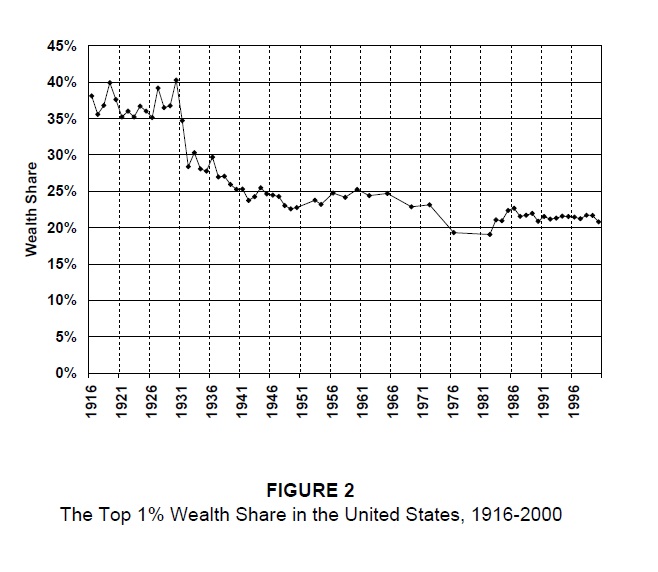Wealth Distribution
Wealth Distribution and what some say about it:
There are however some facts that some do not comment on, that raises questions.
Clearly the mobility at the top is very much at work here.
My friends, some years ago the Federal Government declared a
war on poverty and poverty won.” -- Ronald Reagan, 1988
war on poverty and poverty won.” -- Ronald Reagan, 1988
Links:
Saez Graph on Wealth Distribution
The curves at right, one for Top 1% and the other for the Top 0.1% show a relatively flat wealth curve for many decades. This is, as was pointed out, surprising for the simple reason that the top 1% gain over 20% of the income and integrated over time one could say that the wealth resulting would be at least gradually increasing, but it has been not growing and instead in some time periods actually decreasing.
Government has spent $5.3 trillion on welfare since the war on poverty began, the most expensive war in the history of this country, and the Census Bureau tells us we have lost the war. ---- Bill Archer, 1995 Link
My friends, some years ago the Federal Government declared a war on poverty and poverty won.” -- Ronald Reagan, 1988
Link on Census Bureau on wealth, And the pdf file that is the overview: Link with Table 667: history of GDP Link
Open letter to OWS: Link
How is being on the Forbes 400 today different from being on it back in ancient Greece or Rome, during the Renaissance, or even the French Revolution? an attempt to put today's big money into historical perspective, we asked Forbes Life editor and erstwhile comic novelist Christopher Buckley to look through past issues of The Forbes 400, going back to the founding of Forbes in the year 760 B.C. by B.C. Forbes.
His summary:
I was surprised by what I found, and yet not surprised. The wealthiest have changed a lot over the last two and a half millennia, and yet, in many ways, they have remained remarkably the same: driven, intensely competitive, sometimes frustrating, often inspiring. They worked hard and played hard. Boy, did they play hard. Golf may not have existed in ancient Babylon or Greece or Rome, but they made do with what they had, hurling slaves off the cliffs of Capri and betting how long it would take them to sink, or rowing their triremes straight at each other in an early and somewhat crude version of the Louis Vuitton Cup. But one thing has certainly remained constant, as FORBES ROMANUS Editor Plotinus Baldwinius so presciently wrote in A.D. 36: "Dives sunt dissimili vobis mihique. Habent maiori villae." (The rich are different from you and me. They have bigger villas.)
Wealth is often fleeting. More than 1,300 people have graced the Forbes 400 since 1982. These 23 members have had the stamina to be listed every single year.
Forbes:
Don’t you ever wonder why the rich keep getting richer? Doesn’t it seem curious that no matter how bad the economy, there are still people prospering?
• Despite the financial crisis, the number of millionaires in the United States rose a whopping 16 percent to 7.8 million in 2009.*
• The top 10 percent of Americans now earn around 50 percent of our national income.*
